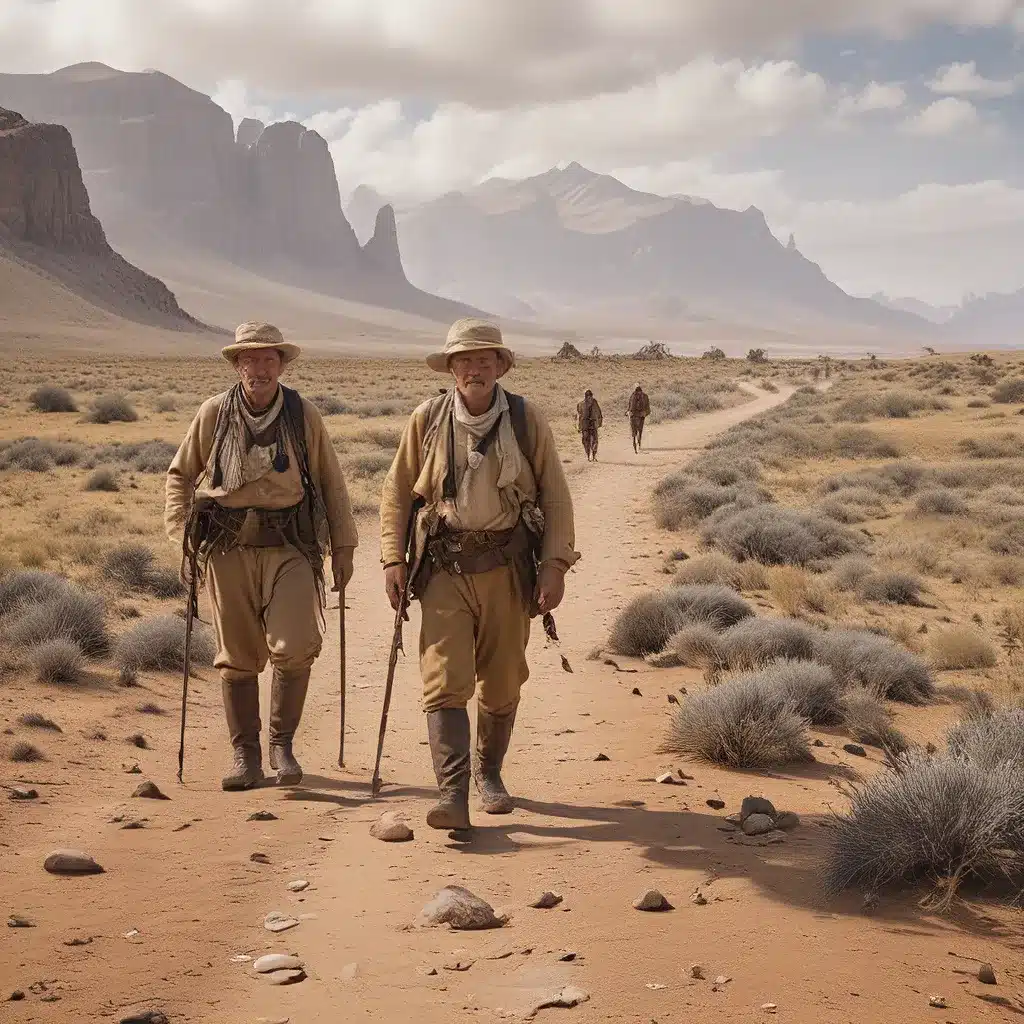
The allure of exploration has captivated humanity for centuries, with the exploits of famous explorers etching their names into the annals of history. From the great sea voyages of the Age of Discovery to the daring treks across uncharted lands, these intrepid individuals have left an indelible mark on our understanding of the world. However, their stories do not end with the passage of time; in fact, a new generation of adventurers has taken it upon themselves to retrace the paths of their legendary predecessors, uncovering fascinating insights and forging their own paths of discovery.
Retracing the Steps of Remarkable Women
While the tales of male explorers have often dominated the historical narrative, a growing number of modern-day adventurers have turned their attention to the remarkable journeys undertaken by pioneering women. Elise Wortley, for example, has dedicated herself to following in the footsteps of trailblazing female explorers, including the French explorer Alexandra David-Néel, who ventured through the Himalayas, and British-Italian explorer Freya Stark, who traversed Iran’s Valley of Assassins.
By not only retracing these women’s routes but also donning the same clothing and utilizing the same equipment, Wortley and her contemporaries have gained a deeper appreciation for the challenges faced by their predecessors. The harsh environments, treacherous terrain, and limited resources required an unparalleled level of resilience and resourcefulness, qualities that these modern-day adventurers have had the privilege of experiencing firsthand.
Recreating Iconic Expeditions
The desire to relive the exploits of famous explorers extends beyond individual journeys, with teams of adventurers coming together to meticulously recreate some of the most iconic expeditions in history. In 2013, a British-Australian team led by Tim Jarvis and Barry Gray followed in the footsteps of Sir Ernest Shackleton, retracing his 800-mile journey across Antarctica. Utilizing the same equipment and clothing as Shackleton’s original expedition, the team faced the same extreme cold, harsh winds, and treacherous terrain that had tested the limits of human endurance a century earlier.
Similarly, Tim Severin has made a name for himself by retracing the voyages of historical figures, from Marco Polo’s travels on motorcycle to the legendary voyages of Sinbad and Ulysses. His most famous expedition, however, was his 1976 journey across the Atlantic in a replica of a 6th-century Irish leather boat, following the legendary voyage of St. Brendan, an Irish monk who, according to legend, sailed to America in the 6th century.
Discovering the Silk Road’s Secrets
The allure of exploring the routes of renowned historical figures has also captivated adventurers seeking to uncover the secrets of the Silk Road. In 1993, Denis Belliveau and Francis O’Donnell embarked on a two-year trek retracing Marco Polo’s journey from Venice to Anatolia, Persia, India, and China. Their Silk Road travels, which became the subject of the 2008 PBS documentary film “In the Footsteps of Marco Polo,” saw the men navigating a variety of transportation methods, from foot and horseback to jeep and boat, all while facing numerous dangerous situations in their quest to follow in the footsteps of the famous explorer.
These modern-day expeditions not only bring significant moments from history back to life but also shed new light on the challenges and discoveries that shaped the world we know today. By immersing themselves in the experiences of their predecessors, these adventurers have forged their own paths of exploration, inspiring others to embark on similar journeys of discovery.
Breaking Barriers and Reaching New Heights
The pursuit of exploration is not limited to retracing the paths of famous explorers; it also encompasses the determination to achieve new milestones and break through long-standing barriers. In 2010, James Husbands, a Jamaican-born Briton, became the first black Briton to reach the North Pole, commemorating the 100th anniversary of Peary and Henson’s 1908-9 expedition, which is generally considered the first to reach the geographic North Pole (although a 1989 analysis suggests that Peary and Henson fell 30 miles short of their goal).
Husbands’ achievement is not only a testament to his own perseverance and skill but also a powerful symbol of the progress made in expanding the diversity and representation within the world of exploration. His journey and subsequent advocacy work have inspired others to pursue their own dreams of adventure and discovery, reminding us that the paths of legendary explorers are not limited to those who have come before.
The Lasting Impact of Exploration
The enduring fascination with the exploits of famous explorers is a testament to the profound impact that their journeys have had on our understanding of the world. By retracing their steps, modern-day adventurers not only honor the legacy of their predecessors but also uncover new insights and perspectives that deepen our appreciation for the challenges and discoveries that shaped history.
Whether it’s following in the footsteps of pioneering female explorers, recreating iconic expeditions, or forging new paths of exploration, these modern-day adventurers are keeping the spirit of discovery alive. Their stories remind us that the allure of the unknown continues to captivate and inspire, encouraging us to explore the world with the same sense of wonder and determination that has driven generations of explorers before us.
As we continue to uncover the secrets of the past and push the boundaries of human exploration, the Lost Kingdoms blog remains a vital resource for those fascinated by the mysteries of ancient civilizations and the extraordinary individuals who have dedicated their lives to uncovering them. Through our ongoing exploration of the past, we can gain a deeper understanding of the present and shape the future, one step at a time.


